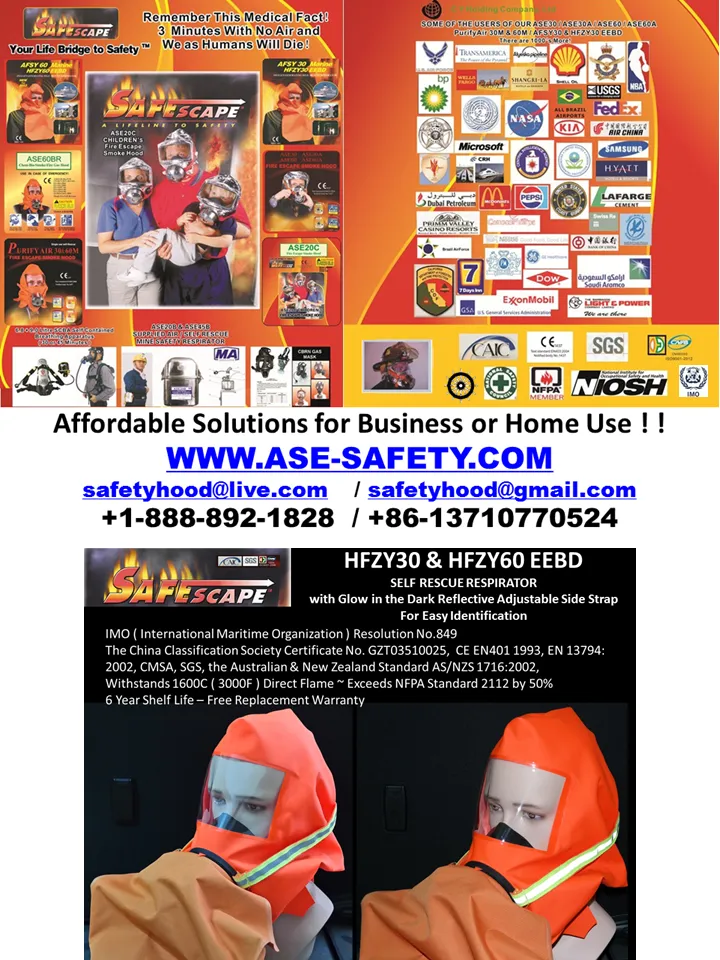The #1 cause of death in a fire is Smoke Inhalation
70-85% Off ALL Deaths in a Fire are Due to SMOKE INHALATION
When have you ever listened to the news and here of a tragic fire where fireman, policeman, first responders or victims have been taken to the hospital and treated for Smoke Inhalation.
Have you ever heard what happened to them after taken to the hospital ?
NEVER do you hear the real story.
Here is a rarely discussed article where a 7 year old girl who was admitted to a hospital to be treated for smoke inhalation after fire swept through her family home.
She was in the news twice in one month almost 30 days after the event as she died from smoke inhalation exposure.
According to CDC the Center for Disease Control - these are their findings.
These are their Government Standards
How much CO ( Carbon Monoxide ) is too much?
The health effects can vary significantly due to age, sex, weight and overall state of health.
CO is measured in Parts per Million or PPM; out of a million molecules of air, how many are carbon monoxide.
The time given respective to the levels referenced in this chart, are for healthy people unless otherwise stated.
Just Remember this Medical Fact THREE 3’s
- 3 weeks without Food and We as Humans Will Die
- 3 days without Water and We as Humans Will Die
- 3 Minutes without Oxygen and We as Humans WILL DIE
12,000 PPM - - Death within 1 – 3 minutes
1,600 PPM - - Nausea within 20 minutes, death within 1 hour
800 PPM - - Nausea and convulsions – death within 2 hours
400 PPM - - Frontal headaches within 1‐2 hours; Nausea and convulsions – death within 2 hours;
UL 2034 alarms should sound within 4 and 15 minutes BY THEN IT COULD BE TOO LATE
200 PPM - - NIOSH A worker will not be exposed to more than this amount.
150 PPM - - UL 2034 Listed alarms must respond within a range of 10 to 50 minutes if this concentration
or higher is present.
70 PPM - - If CO at this level for 50 minutes up to 4 hours, UL 2034 alarm should be sounding.
50 PPM - - Maximum average level for continuous exposure in an 8 hour workday per US Federal Law.
35 PPM - - 8 hour exposure TWA (time weighted average); NIOSHA
(National Institute of Occupational Safety and
Health Administration) of the CDC (Center for Disease Control).
10–35 PPM Marginal ‐ Small children, elderly, and those suffering respiratory or heart
problems are cautioned if
these are chronic exposures concentrations. May increase heart stresses.
25 PPM - - 8 hour TWA limit; ACGIH (American Conference Of Governmental Industrial Hygienists)
9-12 PPM - - This concentration is often measured around busy city streets & intersections.
1-9 PPM - It may be difficult to avoid those often occurring spikes in transient or chronic CO levels
without life-style changes.
Also consider this statistic 9-12 PPM - - This concentration is often measured around busy city streets & intersections.
That is measured during any one minute at a busy intersection
How many Minutes in an Hour - How many Hours exposure Limit ? Only 8 Hours
Even at 9ppm ( measured in a minute ) x 60 minutes in an hour means you are exposing yourself to 540ppm in one hour x 8 hours
Means that you are exposing yourself to 4320 ppm in an 8 hour work day
Look again at the chart above - 1,600 PPM - - Nausea within 20 minutes, death within 1 hour
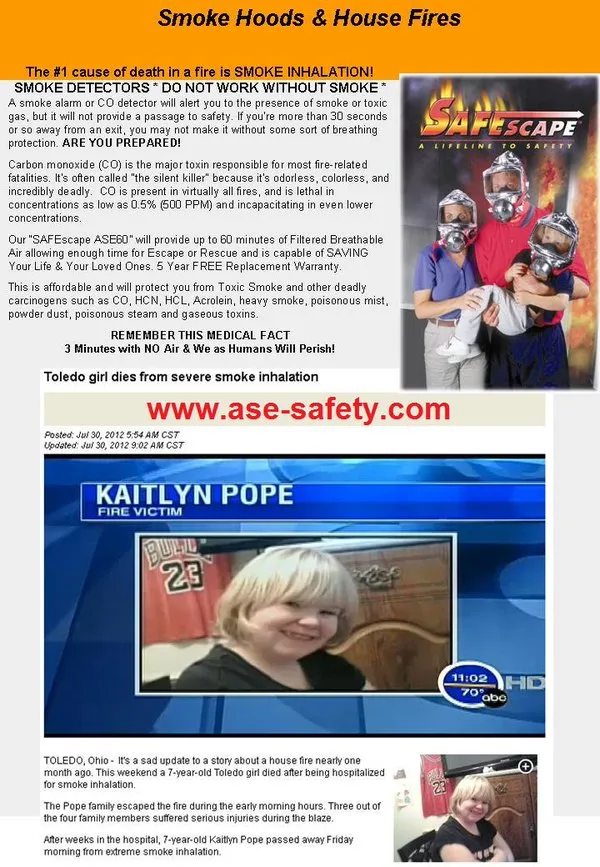
We have the product that is affordable and will minimize death by the inhalation of smoke and
other deadly carcinogens such as CO, HCN, HCL, Acrolein, heavy smoke,
poisonous mist, powder dust, poisonous steam and gaseous toxins.
SMOKE DETECTORS * DO NOT WORK WITHOUT * SMOKE
Smoke detectors Only Warn You - Think about it - Your Smoke Detector does not work - unless you have SMOKE - By then it could be TOO LATE!
Statistics show that the majority of fires occur between 11pm and 7am in the
morning.
The first thing you do after waking up due to a Smoke Alarm going off * is
to Take a Deep Breath * Breath of What * SMOKE!
It is not necessarily the first breath * but the second and third that can
be Life-Threatening
Even physicians and Fire Departments will tell you that you have less than
60 seconds in order to evacuate a smoke filled room or suffer possible death
due to SI ( Smoke Inhalation )
Our goal is to bring to everyone’s attention, an affordable Life Savings
Device * that ultimately Save Lives. Our Safe Escape * Smoke and Fire
Safety Evacuation Mask / Hood

We are an international manufacturer of Affordable Fire Rescue & Safety Equipment with offices located in St. Louis, Missouri USA and Guangzhou, China specializing in Fire Rescue & Safety Equipment, such as; Fire Escape Smoke Hoods, Fire Blankets, Gas Masks, CHEM-BIO, Gas Fire Escape Smoke Hoods, CBRN, SCBA's, Fire Escape Ropes, Escape Ladders, Fireman's Suits.
Providing solutions for Governments, Military, Fire, First Responders, Rescue Authorities and PPE Personal Protective Equipment for Individuals WORLD WIDE.
We supply the NBA in USA / The US Air Force / Australian Air Force / The Philippine Navy / The CIA ( Central Intelligence Agency ) Exxon-Mobile / Shell Oil / NASA / The United Nations / Nestle / FEDEX / Dow Chemical / Samsung Electronics and 1000's of others World Wide.
All units have a Glow in the Dark Adjustable side Strap for Easy Identification by Rescue Authorities
All units come with a 5 Year Shelf Life
and Free One Time Replacement Warranty ( conditions apply )
We look forward to becoming Partners in Saving Lives
Robert Coleman, CEO
C Y Holding Company Ltd
Guangzhou, PRC China
86-13710770524 Direct Line 24 / 7
86-13538895080 International Direct Mobile Number
C Y Holding Company Ltd
St. Louis, Missouri USA
1-888-892-1828 Toll Free
1-636-244-1791 Fax
SKYPE ID: aussieinchina22
Email: safetyhood@live.com / safetyhood@gmail.com
Various Youtube Videos to View of Our Range of Products
Full Product 13 Minute Video shows all Products
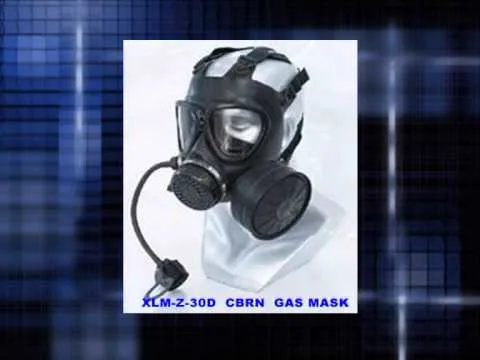
HFZY30 & HFZY60 EEBD Self Rescue Respirator
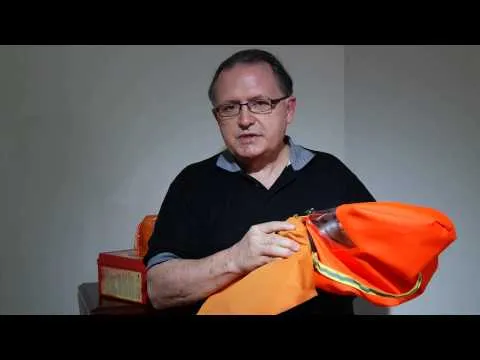
ASE30 / ASE60 Fire Escape Smoke Hood
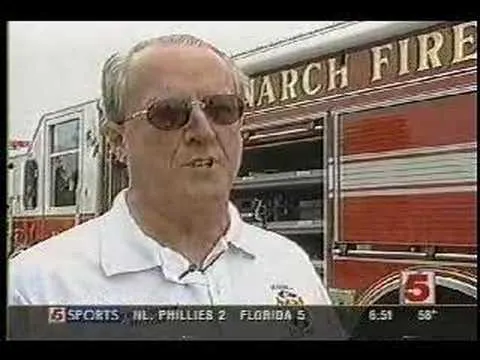
ASE30DH Emergency Escape System

